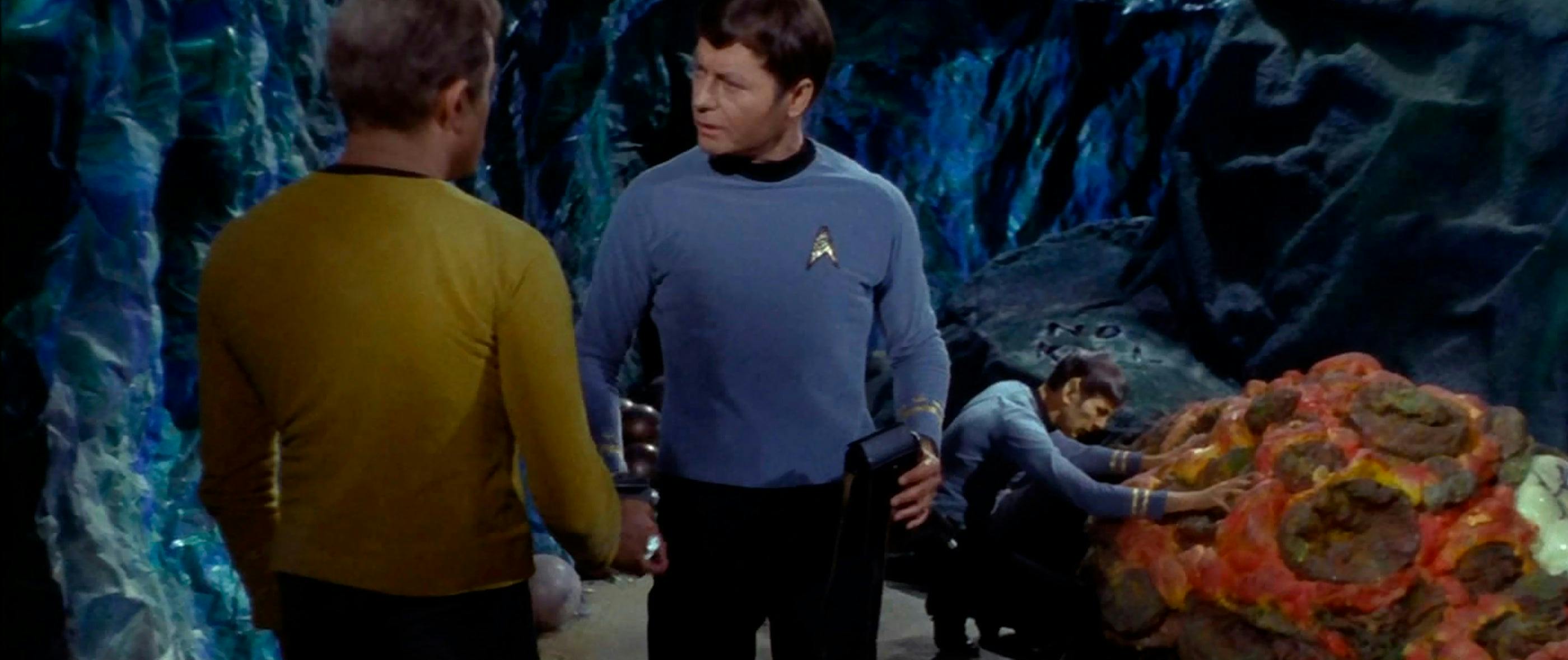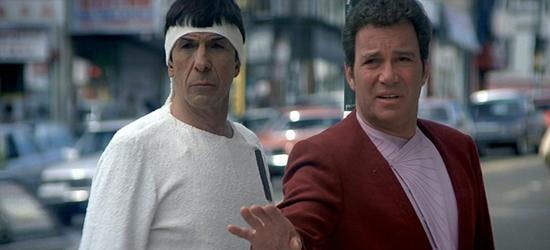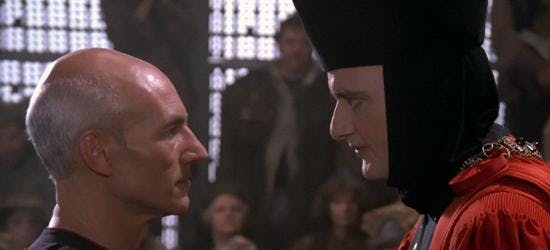Published Jan 3, 2017
Horta, Humpbacks and the Encounter at Farpoint
Horta, Humpbacks and the Encounter at Farpoint

Gene Roddenberry’s vision of the Star Trek universe was one where humanity overcame the violence and prejudices that have plagued much of its history and unified in a vision of equity, exploration, and a just society. Star Trek has consistently been at the forefront of addressing important social issues. These include issues of race, American identity, torture, the relationship between religion and society, the ethics of war, and dialogical approaches to diplomacy. One area that has not received much formal attention is how Star Trek includes other animals in its ethical purview. While this aspect of Trek’s vision has been less central to the impact of this cultural phenomenon, it has been consistently addressed across multiple series. This was seen early in Star Trek: The Next Generation, when it was revealed that the food replicators addressed not only the pragmatic issue of food and prolonged space travel, but it had a moral rationale as well. In the episode, “Lonely Among Us,” Commander Riker says to the Antican ambassador, “We no longer enslave animals for food purposes.” In giving a moral rationale, acclaimed Trek writer D.C. Fontana intended to offer ethical insight into Starfleet’s ethics. Other animals are not simply products of human consumption, but beings whose moral relevance makes demands on human interactions with them. This concern for other animal species is illustrated at key moments throughout Trek’s illustrious history. I will briefly address three instances where Trek put forward innovative ethical discussions regarding other animals: the Horta, Humpback whales, and the creatures at Farpoint Station.

In The Star Trek: The Original Series episode, “The Devil in the Dark,” Kirk, Spock and McCoy reach a human mining colony where a creature has killed several of the human workers. It is soon discovered that human industrial practice has placed this species at risk. The Horta, a mother who is the last of its kind, is defending her eggs which are in jeopardy from the mining activities carried out by humans to meet energy needs. Kirk labels the Horta a “monster” when he learns of the deaths of some miners. It is after the Horta removes and hides a key mechanical piece that Kirk calls her a “creature” (1) and shows disdain for the leader of the miners’ ongoing use of the monstrous nomenclature. After wounding the Horta, Kirk attempts to communicate with it. The creature moves forward when Kirk speaks and recoils like a wounded animal when Kirk raises his phaser. In this scene, Kirk is expanding his consciousness as to what constitutes morally relevant life.
However, it is only with Spock’s mind meld that the viewer fully understands the full thrust of the episode’s message. Through Spock’s turning the pain and psychological state of the Horta into words, the Horta speaks. “The thousands… devils! Eternity ends! The chamber of the ages! The altar of tomorrow! Murderers! Stop them! Kill! Strike back! Monsters!” With these words, we understand who is to be identified as the devil in the dark and who is truly monstrous. The devil is not the Horta, but humans who encroach upon the natural habitat of the animal and jeopardize its existence through need for industry. The devil is we who treat animals and nature as we see fit in our quest for expansion and consumption of materials. The Horta and the miners strike a deal which is profitable for both. At this point in Trek’s development there is still no need to curb industry profitable to humans and the animal can be used to aid human expansion.

These themes are taken further with the fourth motion picture in the Star Trek movie franchise: The Voyage Home. The instrumentalist conclusion of “The Devil in the Dark,” where the humans concede to co-existing with the Horta provided it remains profitable, is challenged with Spock’s logic. The Vulcan says to Kirk, “To hunt a species to extinction is not logical.” Spock counters the instrumentalist narrative that humanity constructs for its unfettered use of other species. For it to be illogical to hunt a species to extinction there are two possibilities. First, human use of the species is no longer possible after extinction and so it is illogical for humanity to harm itself and limit the benefit it may receive from an animal. Second, it could be illogical because the moral value of another species of animal is not derived from its benefit for humans. It seems that Spock has the latter in mind when he says to Kirk, “Admiral, if we were to assume these whales were ours to do with as we pleased, we would be as guilty as those who caused their extinction.” Here Spock argues against an act saving the Humpback whales if it is simply to use this species as instruments for human benefit. Contrary to Immanuel Kant, Spock argues that animals have direct value by virtue of their own existence, and not merely indirect value by virtue of their benefit to humans.

Finally, in the pilot episode of TNG, the new crew is forced to stand as proxy in a mock courtroom by the omnipotent Q, who is putting humanity on trial. The challenge Q puts before Picard is the mystery of Farpoint station, which appears to inquire how the Bandi colony can power such a place with limited technology. It is only at the conclusion of the episode that viewers are exposed to the possibility that humans are being tested not only on their cognitive potential, but also their moral potential. As the space animal (Picard refers to it as a “creature”) attacks the colony, Groppler Zorn implores Picard to do away with it as it is killing his people. Picard simply asks whether it has reason to do so. The Bandi were using the wounded creature’s ability to convert energy to matter in order to advance the industrial capabilities of the humanoids. Picard declares that this is not a good enough reason to advance the suffering of the animal. The final test comes from Q, who presses the captain, “Save yourself, it may attack you now… make phasers and photon torpedoes.” At the conclusion, the audience realizes that humanity is judged not only on its ability to solve puzzles, but even more how it responds to a wounded animal and the threats of its mate.
In these examples, we see Star Trek’s expanding moral inclusivity regarding other animals. In moving from an instrumentalist approach to other animals to recognition of their dignity independent of humanity, Star Trek continues to challenge one of the more pressing moral questions of our day: how are we to treat other animal species? Star Trek, in its various iterations, challenges its audience to consider the potential of the moral dignity of other animals and our relationship to them. In a world that has lost half of its vertebrate wildlife in the last 40 years due to human activity, Star Trek challenges us to change our approach to other animal species. (2)
Let us make it so.
1. When Star Trek refers to a "creature" it generally invokes the notion of an animal. When beings with greater communicative powers with hominoids are intended the language used is typically "entity" or "being."2. Living Planet Report 2014: Species and Spaces, People and Places. no. 1, World Wildlife Federation International, 1-180.
